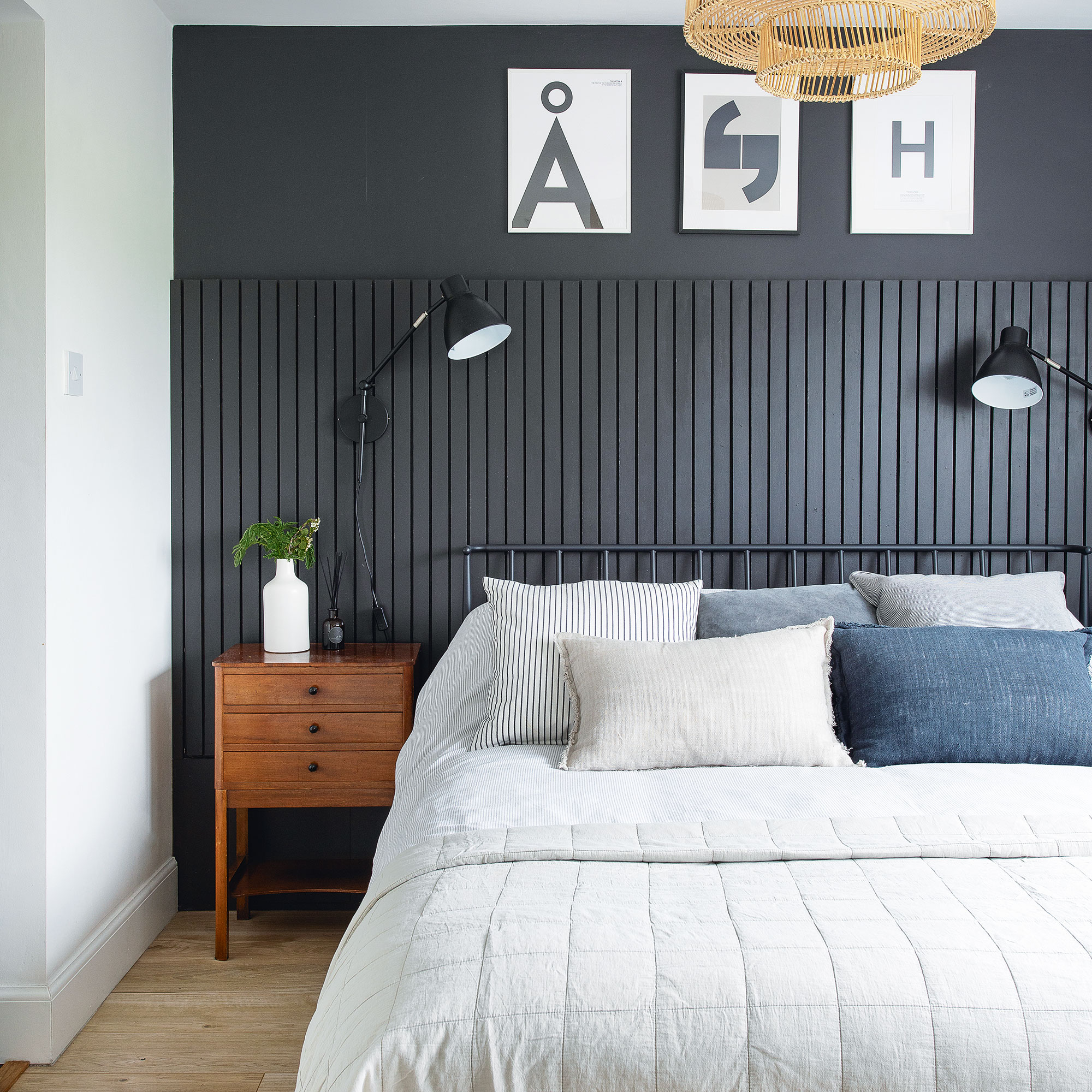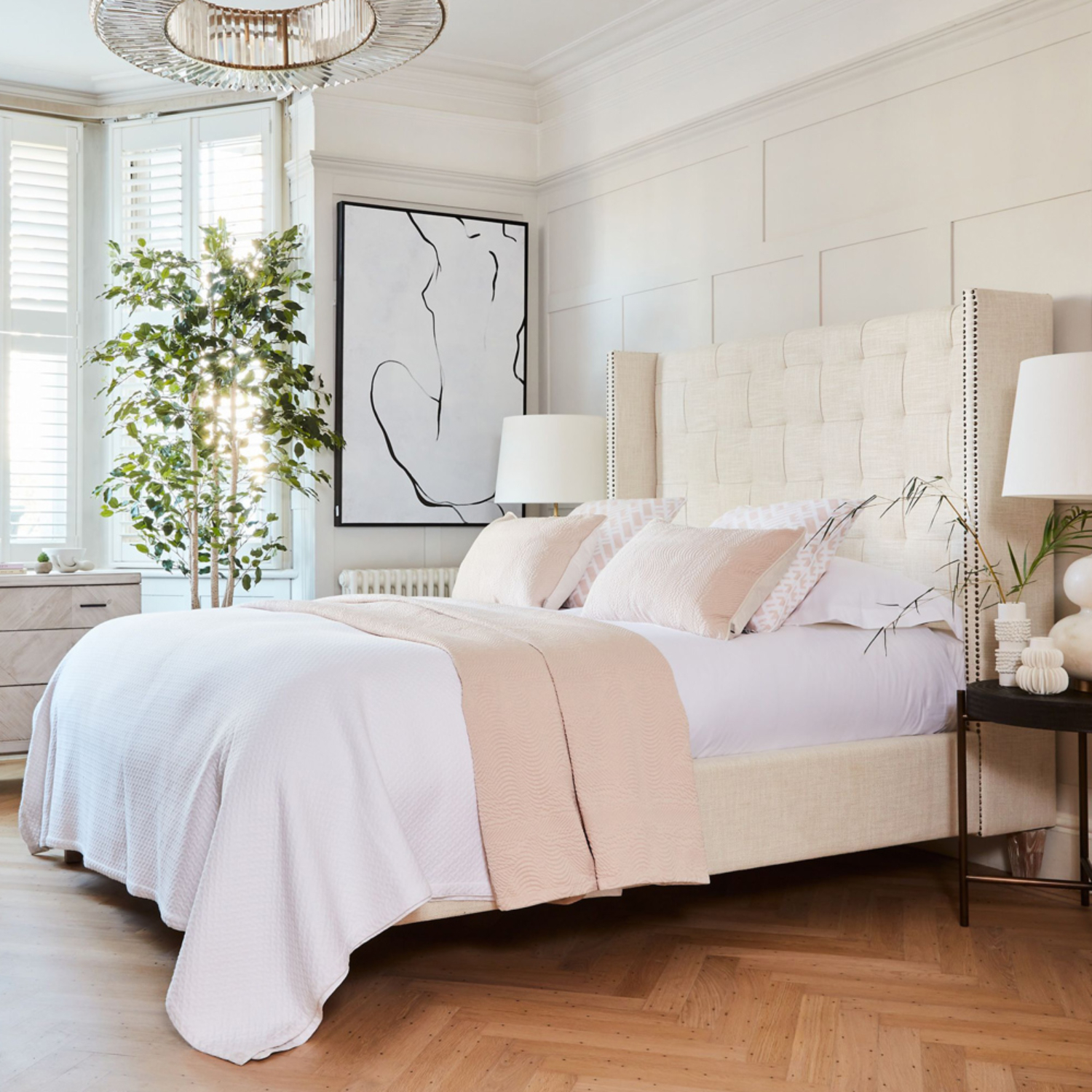The 9 bedroom design mistakes ruining the look of your room - quick fixes to make it look better instantly
The experts share their top tips to create a relaxing and well thought out space


What’s the first thing that springs to mind when you think of your bedroom? Could it do with a declutter, or does it often feel darker and smaller than it is? Well, you might be making some bedroom design mistakes without even realising it.
Bedroom ideas should all be about creating a relaxing haven, but whether you have a small bedroom or a larger floor plan, certain design mistakes can hinder this feeling. You might have fallen foul of a bedroom layout mistake or made a blunder with your bedroom lighting ideas that mean your room is lacking that welcoming and cohesive feeling essential to a calming bedroom.
However, there’s no need to worry as the experts have weighed in on which design mistakes you should try to avoid in your bedroom, as well as what to do instead. Many of the changes are easy to fix and can instantly improve the look and feel of your bedroom.
Bedroom design mistakes to avoid
‘The design of your bedroom plays an important role in creating a peaceful and restful atmosphere but many people tend to make common design mistakes that can affect the functionality and aesthetic of the space,’ explains Open Space Concepts’ Home Design Expert, Jamie Jones.
Your bedroom isn't just a place for sleeping either. 'It's also a place to relax, unwind, and get cosy as you settle down for bedtime. So, you’ll want to make it as comfortable as possible and fully utilise the space, especially if you have a smaller bedroom,’ according to Rhiannon Johns, Interior Designer and Head of Brand at Piglet in Bed.
So, let’s take a look at what we should be avoiding – and instead focus on the best bedroom design tips for better sleep – if we want our bedrooms to be a relaxing and well thought out space…
1. Overcrowding the room

Whether you have a small bedroom or have more space to play with, one of the biggest bedroom design mistakes that you could be making is filling the room with too much furniture.
Get the Ideal Home Newsletter
Sign up to our newsletter for style and decor inspiration, house makeovers, project advice and more.
‘Adding too much furniture to a room can make the space feel cramped, cluttered and smaller as it reduces the perception of open space,’ Jamie explains. If you’re short on space or want to make your bedroom look more expansive, think about which items of furniture are truly essential for you. If you don't use your bulky dressing table or an armchair that only ends up being piled with clothing, these could both go to free up some much needed space.
2. Not utilising wall space

‘Not only does empty wall space make a room feel less welcoming and personal,’ declares Kate Duckworth, Trends & Interiors Expert at Swift Direct Blinds. But you can also be wasting crucial space in a smaller bedroom. Making the most of empty wall space with shelves, hooks or even wall art and prints can also add personality to an otherwise plain bedroom.
However, you will want to ‘make sure you don’t overwhelm the space with wall fittings,’ Kate adds. ‘Choose maybe two walls to utilise for storage. This will help both optimise storage but also ensure that you aren’t closing the space in on itself.’
3. Choosing the wrong size bed

‘Choosing the right bed size is crucial for a well-designed bedroom,’ outlines Chloe Dacosta, Interim Design Manager at Blinds 2go. Much like not overcrowding your room with furniture, you want to leave enough space for you to comfortably move around your bed and room.
‘Before buying a new bed, measure the dimensions of your room and make sure you have at least a 50 to 60cm gap around the sides and end,’ says MyJobQuote.co.uk’s Interior Design Expert, Ryan McDonough.
‘It is absolutely key to buy furniture that is appropriate for the size of your bedroom – there is no point cramming a super king bed into a small space; whilst at the same time a double bed would look lost in a super-large bedroom,’ Lucy Mather, Design Expert at Arighi Bianchi, recommends.
4. Not factoring a headboard into the design

If you don’t currently have a headboard or have a rather plain option, you’re missing out on the ‘opportunity to showcase creativity and personality,’ says Debbie Leigh, Design Manager at ILIV. You can ‘experiment with bold geometric patterns, luxurious upholstery fabrics, or opt for a bespoke design that reflects your individual style,’ or why not add drama to your headboard ideas with an oversized or unique shape.
‘For small rooms with lower ceilings, avoid tall headboards which can make a space feel even smaller. Instead, choose a design that has a neat curvature or scallop design, rather than harsh lines which will break up the room even more,’ says Georgia Metcalfe, Founder & Creative Director at French Bedroom.
Alternatively, ‘tying in the colours of your headboard with soft furnishings, an upholstered chair or curtains will create a beautifully cohesive look that only enhances the headboard as your room’s focal point.’
5. Not considering the lighting

While there are a number of bedroom lighting mistakes that you could potentially make, it’s important to consider how you use your bedroom. For example, if you like to read in bed you’ll need task lighting. The same can be said if you use part of your bedroom as a home office or have a dressing area where you do your makeup.
Only having a ceiling light or harsh lighting ‘can negatively affect the mood of your bedroom, especially in the evening, as it can interfere with the body's natural circadian rhythm and melatonin production, affecting your sleep,’ Jamie reveals. ‘Where possible, soft, warm light should be used to mimic natural lighting, helping signal to your body that it's time to wind down and promoting better sleep.’
But ‘don’t overlook other lighting options, including pot lights and wall sconces with a dimmer option,’ says Chloe. ‘This not only sets a cosy ambience but also allows you to customise lighting for different moods during your winding down time.’
6. Not going big on storage solutions

When you think of everything you store in your bedroom – from clothing and shoes, to handbags, bedding and even suitcases – it’s easy to see how not storing them correctly could completely overwhelm the space. However, there are several great storage solutions to take advantage of in your bedroom, with hidden storage being especially helpful for keeping clutter at bay.
‘Extra storage at the end of the bed can be a game-changer as it not only serves as extra seating but also provides storage for items like bed decorations and blankets,’ says Chloe. While ‘a divan bed with hidden storage is another great choice and helps to keep the room calm and uncluttered, providing additional storage without taking up extra floor space,’ affirms Shelley Cochrane, Accessories Buyer at Furniture Village.
7. Underutilising colour

‘Playing it too safe with colour choices in the bedroom can result in an uninspiring bedroom that lacks any sense of interior design,’ warns My Fitted Bedroom's Design Expert, Megan Baker. While darker hues can make a space look smaller, this is a great option when creating a cosy bedroom space.
An all-white bedroom can also look rather cold and clinical, so if you do choose to paint your walls white, it is important to add colour and patterns back in with your choice of bedding, curtains or other soft furnishings.
8. Placing your furniture – specifically your bed – in the wrong position

‘If you find yourself constantly bumping into furniture in your bedroom it might be time to switch up your layout,’ affirms Rebecca Snowden, Interior Style Advisor at Furniture And Choice. This can be even more evident in bedrooms that aren’t a straightforward rectangular or square shape.
Your bed will most likely take up the most amount of space in your bedroom but it’s important to consider where to position it. ‘You might be tempted to push a bed into the corner of the room to make more room for drawers and wardrobes but this can feel claustrophobic and leave you too close to a radiator or window, spoiling your sleep,’ Ryan warns.
It is worth noting that what might work for some won’t work for others, so this is another choice that is very much down to personal preference.
FAQs
How can I improve my existing bedroom design?
It can be really worthwhile to experiment with different layouts to see what works best for your space.
‘Often it can be hard to visualise your room's potential without physically moving furniture and décor around,’ explains Margaret Larson, Interior Design Expert at Sustainable Furniture. So, why not see how your bed looks in another position. The same can be said for rugs, chests of drawers and floor lamps.
What can make a bedroom feel larger?
Even larger bedrooms can feel cramped if they’re not designed correctly but there are a few top tips to make your bedroom look and feel larger.
‘To enhance the perception of space, consider incorporating mirrors into furniture pieces such as wardrobe doors,’ proffers The Painted Furniture Company’s Creative Director Kate Palmer. ‘Mirrors create an illusion of depth and reflect light, making the room feel larger and more open.’
Certain colours make a bedroom look bigger too. So, you may want to opt for one of these to transform your sleeping space.
Just one or two of these tweaks could be all you need to fast-forward your bedroom to a calm and peaceful retreat.

Ellis Cochrane has been a Freelance Contributor for Ideal Home since 2023. Ellis has been writing about homes, interiors and gardens for four years now, with her also contributing to House Beautiful, Country Living, Expert Reviews, Real Homes and Stylist.
-
 The red creeping thyme lawn is a beautiful new take on traditional grass – here's how to grow one
The red creeping thyme lawn is a beautiful new take on traditional grass – here's how to grow oneIt's effortless and unique
By Sophie King
-
 Mary Berry’s favourite flower to grow in the garden is a low-maintenance winter bloomer - and you can plant it right now
Mary Berry’s favourite flower to grow in the garden is a low-maintenance winter bloomer - and you can plant it right nowThese gorgeous purple blooms will brighten up your garden
By Kezia Reynolds
-
 Will a conservatory add value to your home and how can you maximise it?
Will a conservatory add value to your home and how can you maximise it?This is what the pros say
By Amy Reeves